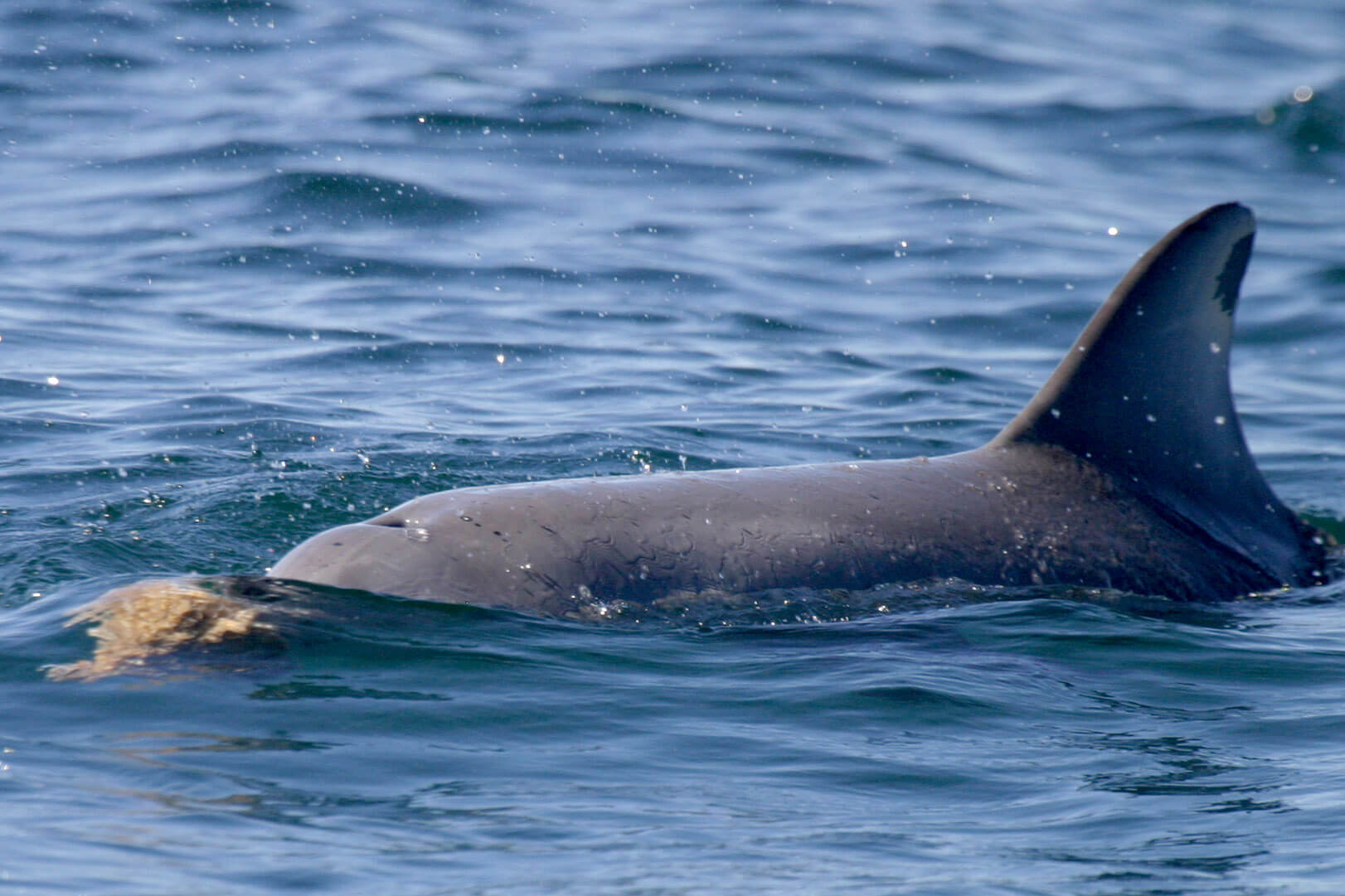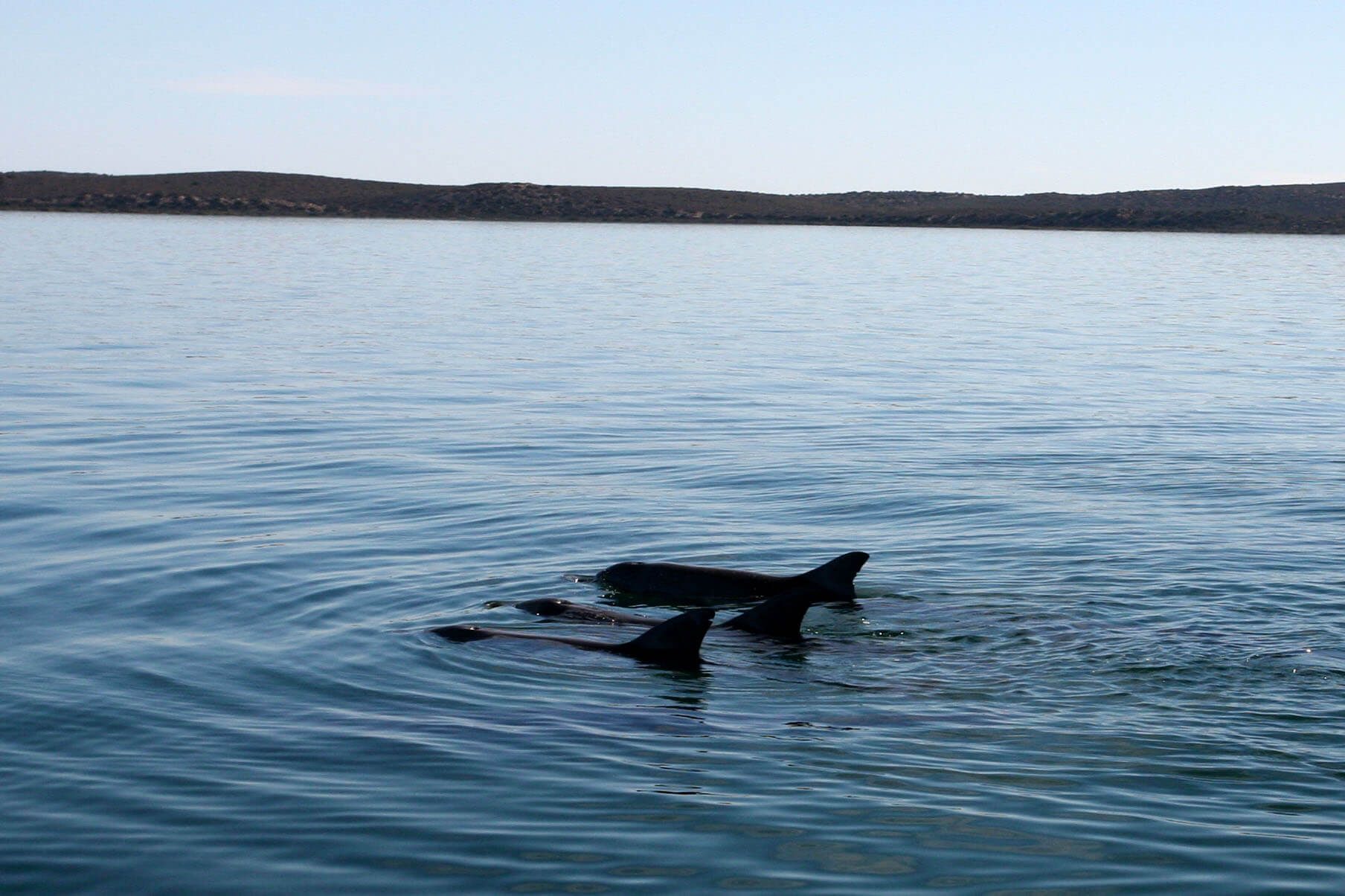In Shark Bay, Western Australia, a subset of the bottlenose dolphin population displays remarkable ingenuity. When foraging, they cover their snouts with a sea sponge in order to search the seabed. The use of such a tool is rare amongst cetaceans and this behaviour, transmitted from mother to offspring, gives them access to a unique diet.
Prey unearthed
Mom taught me!
The existence of distinct feeding techniques within the same population suggests the influence of various factors such as genetic predispositions, different ecological conditions or even social learning. In the bottlenose dolphin, mastering sponge use is mainly a social learning process the transmission of which is vertical or matrilineal, explain the researchers of a study released in 2019. This skill is therefore passed on from mothers to their offspring. In fact, females adopt the practice in larger numbers than their male counterparts, only half of which make use of this hunting technique. To date, no case has ever been documented of sponging in which the individual did not first learn the practice from its mother.
A number of explanations concerning this behavioural difference between males and females have been put forward. Males, which maintain extensive territories, dedicate a great deal of their time to socializing, alliance forming playing a key role in their reproduction. Indeed, males will work together in order to force ovulating females to mate. This reproductive strategy is difficult to reconcile with sponging, a difficult-to-learn, time-intensive technique that can only be practised when alone.
As for females, they tend to study their mother’s behaviour more carefully, be it for foraging techniques or habitat use, in addition to striving to optimize their food intake with more elaborate hunting techniques. Scientists have also suggested that encouraging the transmission of this knowledge to female offspring could be advantageous for mothers since they, unlike males, will be able to transmit this knowledge to the next generation.
An environment to discover
Tools in the animal kingdom
Learn more
- (2008) Mann, J., Sargeant, B. L., Watson-Capps, J. J., Gibson, Q. A., Heithaus, M. R., Connor, R. C., Patterson, E. Why Do Dolphins Carry Sponges? PLoS ONE 3 (12)
- (2014) Krützen, M., Kreicker, S., MacLeod, C. D., Learmonth, J., Kopps, A. M., Walsham, P., Allen, S. J. Cultural transmission of tool use by Indo-Pacific bottlenose dolphins (Tursiops sp.) provides access to a novel foraging niche. Proceedings of the Royal Society B 281
- (2019) Wild, S., Allen, S. J., Krützen, M., King, S. L., Gerber, L., Hoppitt, W. J. E. Multi-network-based diffusion analysis reveals vertical cultural transmission of sponge tool use within dolphin matrilines. Biology Letters 15








